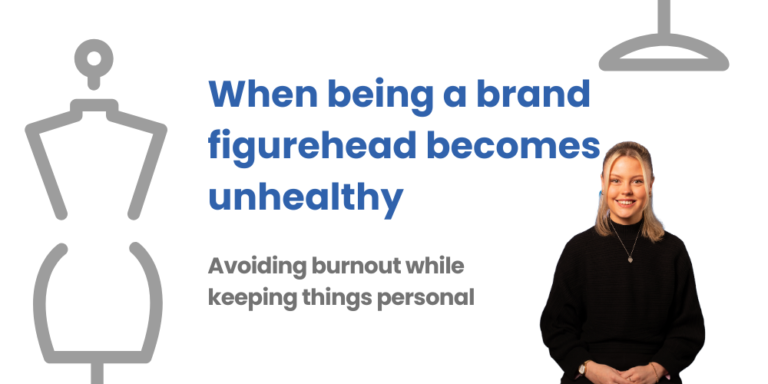Digital marketing has never been more unpredictable. Already, January 2025 has been a particularly chaotic month, with TikTok’s disappearance (and subsequent reappearance), the chaos caused by aspect ratios on Instagram, and, of course, the general state of the world.
With so much going on, standing out feels more demanding than ever. Looking ahead, what is 2025 going to look like for digital marketing, really?
Let’s start by rewinding to the very end of 2024. We gathered our thoughts to discuss what 2025 might look like.
The Obligatory AI opinion…
Let’s not waste too much time setting the scene here – we’d be here all day. You’ve heard of AI. 2024 was the year ‘Powered by AI’ became the new ‘High in Protein’ – we might sort of know what that means, but the more fast and loose you play it, the less impact it has.
So much is being said about and done with it that it’s hard to keep track of. While it’s easy to get caught up in the LinkedIn echo chamber, what has been interesting is learning how it’s affecting consumers. Despite AI emphatically entering the public sphere last year, the response to the likes of the new AI-powered Coca-Cola advert was somewhat lukewarm, but that certainly doesn’t mean it’s the last we’ll see of it.
In fact, a recent study indicated that 39% of a sample audience could not discern authentic images from their AI counterparts, setting an interesting, perhaps concerning precedent, particularly following the emergence of DeepSeek and the release of the super-powerful ChatGPT o1. Given how far AI has come in just a couple of years, it’s hard to predict where we’ll be in even a year; all we can say for sure is that there’s a lot more to come.
While we, as individuals and as an agency, can’t affect a whole lot of change on the scale that it needs to be affected, we would urge those writing technical, or worse, legal information to seriously consider its accuracy and privacy when dealing with sensitive information as more and more law firms raise concerns. AI might not be as bad as it sounds, but if it’s to be used safely, employee literacy needs to catch up fast.
...and a massive blow for SEO
Despite its reputation as a somewhat opaque industry at the best of times, it’s undeniable that the shifts to SEO have been seismic and could significantly affect how we consume information and strategise on platforms like Google.
Indeed, Google has been the focus of much scrutiny. The most publicly noticeable change to its function is the new AI-powered ‘Search Generative Experience’; we can’t impress enough how significant this change is.
Taking up most of the screen when using Google, this new feature has fundamentally changed the way users search on Google, and industry professionals are scrambling to find the most effective way to create content that feeds into the AI answer, with a link and citation as the top answer being the sought after first prize.
This feature, coupled with Google’s recent court visits resulting in a commitment to sharing internal algorithmic data with competitors, means they are no longer a monopoly, as platforms like Bing are given a fairer shake, particularly due to the negative feedback Google’s new search approach has received.
So what’s the solution? Before the many Google updates in 2024, SEOs could focus purely on the website’s on-page content, technical performance, and off-page efforts to perform on search engines. However, the chatter within the SEO industry is that brand building through email marketing, organic social, and various other channels has become the norm.
Google appears to prefer brands that don’t solely rely on organic search results to generate traffic. Other traffic signals have become increasingly important, especially for websites that provide exclusively informational content and generate revenue through affiliate marketing.
In short, SEO is no longer just about optimising for Google—it’s about building a brand that can attract organic traffic across multiple channels. As search continues to evolve, those who adapt, diversify their efforts and think beyond just Google rankings will be the ones who stay ahead.
The era of faux-thenticity is over
Elsewhere, we’re seeing some profound changes in how brands present themselves to the public. For the last few years, marketers have rightly pushed their brands towards a more ‘authentic’ presentation to better relate to their audience.
With so many brands coming under intense scrutiny for green-washing, rainbow-washing, purpose-washing, etc., it’s pretty clear that with only a few brands actually willing to commit to the bit, the authenticity experiment hasn’t worked. It’s no surprise that trust in brands is at rock bottom.
In retrospect, the inherent flaw with humanising brands is that humans are fallible in a way that brands can’t afford to be. In 2025, it wouldn’t be surprising if brands made more of an effort to occupy their traditional space, with more separation between themselves and their customers.
But that’s not all.
…and it’s going to affect influencers too.
This separation between brands and audiences might also create a more significant gap in how influencers are deployed. It’s no secret that mid-weight influencers have been, at times, a fairly volatile resource for brands. To this end, we’ll likely see brands revert to leaning more heavily on media-trained, familiar faces at the top while using low-risk, smaller-than-nano influencers resembling traditional giveaways to deliver more authentic word-of-mouth feedback. So where does that leave the many, many influencers in between?
Like brands, influencers have lost the public’s trust as their numbers have grown. 2025 should be about re-establishing this trust; to do so, influencers must convince their audiences that they won’t support anything just because it pays.
Like social media marketing, it will be about doing less, better. By focusing on select products they genuinely believe in, influencers should be able to distinguish themselves in an otherwise hyper-saturated market while staying in the good graces of brands. It will be a tough year, but ultimately, those who can convince their audiences that they are worth listening to will be able to stick around.
The novelty of social media has worn off...
Coming off the back of our last point, this one is a bit of a biggie, but it really does feel like the sparkle of social has faded significantly in the last year.
And it’s not just us. With Instagram users declining by a significant 16% year over year and TikTok feeling like part of the furniture, now seems like the time for something new, but it’s not looking likely. So why is this happening?
While it’s hard to pin it on just one thing, something that has undeniably sucked the fun out of genuine cultural moments and memes is the way brands have pretty relentlessly jumped on trends. It might seem sacrilegious coming from a marketing agency, but it’s true – marketers have got a little too good at tapping into the cultural zeitgeist, and ironically, it’s hurting popular culture.
No sooner has a BRAT Summer or a Moo Deng arrived on the scene than every social media manager worldwide is looking at how they can jump on it because they’ve been told to do so. Inevitably, this works for a chosen few; everyone pats them on the back, and then it’s onto the next thing. Meanwhile, the audiences of these brands, which are often responsible for the trend, have been hit with a thunderous, suffocating barrage of trending material in the space of a few days, making them want to forget they ever said anything. So they’re onto the next thing too, and on and on it goes.
Just as we’ve recommended for brand/influencer/audience relationships, it’s time also for a bit of separation between brand socials and audiences. Maybe it’s time for trends to go the way of National Days – only post when you feel it’s necessary and it feels like an organic fit for your brand.
…while podcasts go from strength to strength
Brand partnerships aren’t the only place we see a considerable disparity between indie creators and more powerful media conglomerates. While we’re well past the advent of YouTubers becoming celebrities and figureheads in their own right, it seems we’re on the cusp of podcasts and their hosts experiencing mainstream acceptance like never before.
This disparity is typified by podcast networks recruiting more famous faces to further push the platform’s acceptance, alongside larger podcasting companies’ massive investment in video content. More engaging for passive listening than just audio, good video also has the benefit of being highly shareable on socials, with many podcasts pushing for memeable moments, using the formula employed so effectively by Hot Ones and Chicken Shop Date. With platforms like Spotify pushing its video offering to the front, platforms and networks are taking advantage of the public’s desire for passive, long-form content.
Due to this sudden influx, one significant challenge for more prominent podcasts will be to differentiate themselves sufficiently from their competitors while keeping investors and advertisers onside as the market becomes increasingly saturated.
That said, video can be very expensive, so where does this leave smaller businesses looking to get in on the action? While many thought leaders claim video is king, this isn’t always true, as many independent creators are bucking this trend with audio-only formats and niche content. As with all art and creative mediums, your unique voice will appeal to your audience, provided you operate consistently and produce quality content, video or not.
Is the future trendless?
So that’s content mediums out of the way, but how will 2025’s content actually look?
With the last few years being a particularly taxing one in many ways, from war to pandemics to climate crises, it’s no surprise that nostalgia played such an essential role in shaping the decade’s visual narrative as people hark back to the joy of youth, and ‘simpler’ times. While cycles of fashion have always played a role in forming the prevailing taste consensus, the speed at which the cycles occur has wholly blurred. The vast majority of the ‘00s was heavily influenced by ’80s nostalgia, whereas in the last couple of years, we’ve burned through ‘00s and ‘90s nostalgia at an alarming rate. So maybe, just maybe, that’s the end of that.
Now, we’re not saying trends are dead – because they never will be – but slowly, their plurality has declined to near powerlessness, and we’re entering the era of the anti-trend. This is backed by the fact that as technology becomes increasingly inescapable, the new trend, and indeed, new luxury, is not being on your phone, unplugged from what’s new and trending. Combined with greater awareness and understanding of the effects and dangers of high screen time and phone addiction, it might not be in 2025, but this will, maybe, possibly, potentially lead to a cool-down in the unsustainable pace of trends.
So that’s 2025, and maybe even a little beyond. It seems that, more than anything, it will be a year in which the public continues to become more aware of their role in the marketing mix while taking more control over their technological habits. Brands and influencers will have to work harder than ever to build trust with their audiences, but a more simplified approach to outreach will help clarify their roles as we move away from mirroring customers. Despite everything that’s going on in the world right now, this could be good news.






